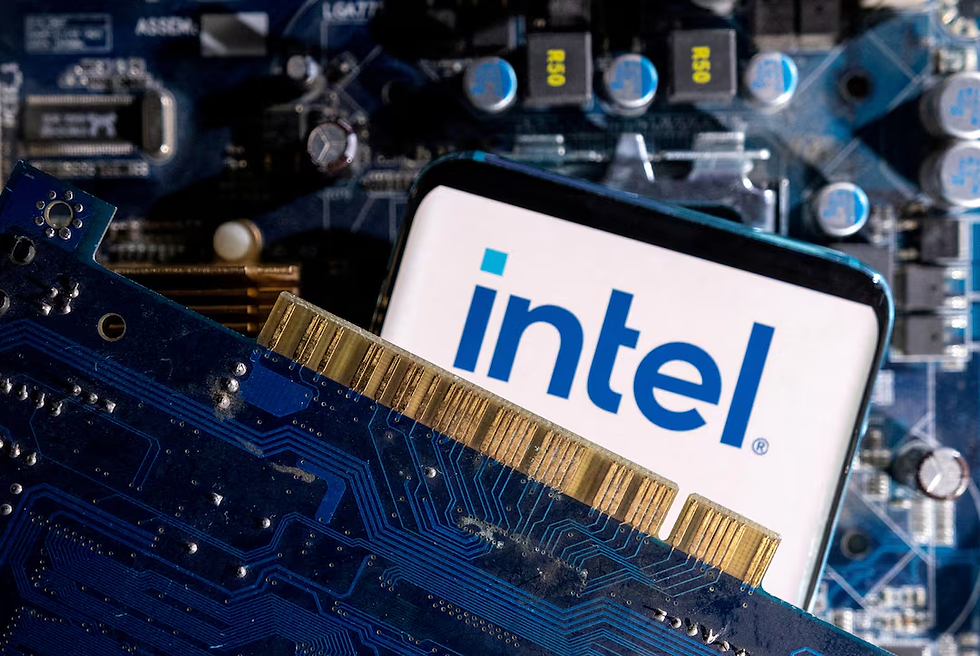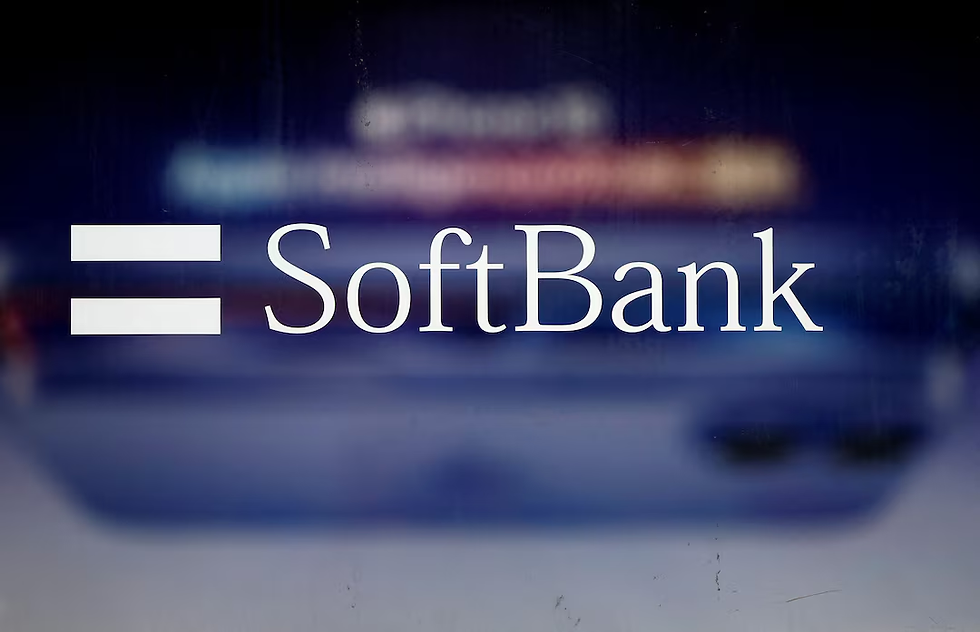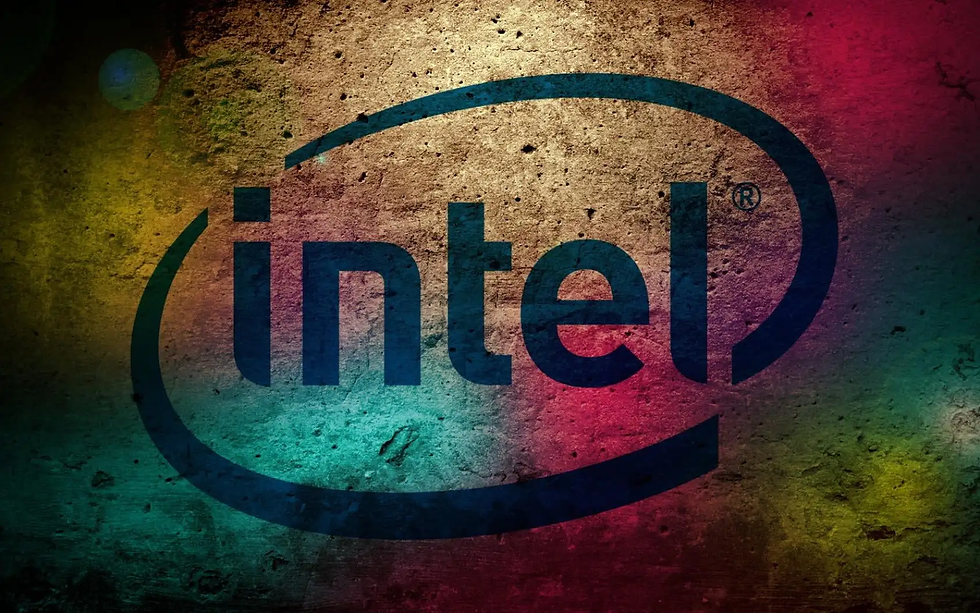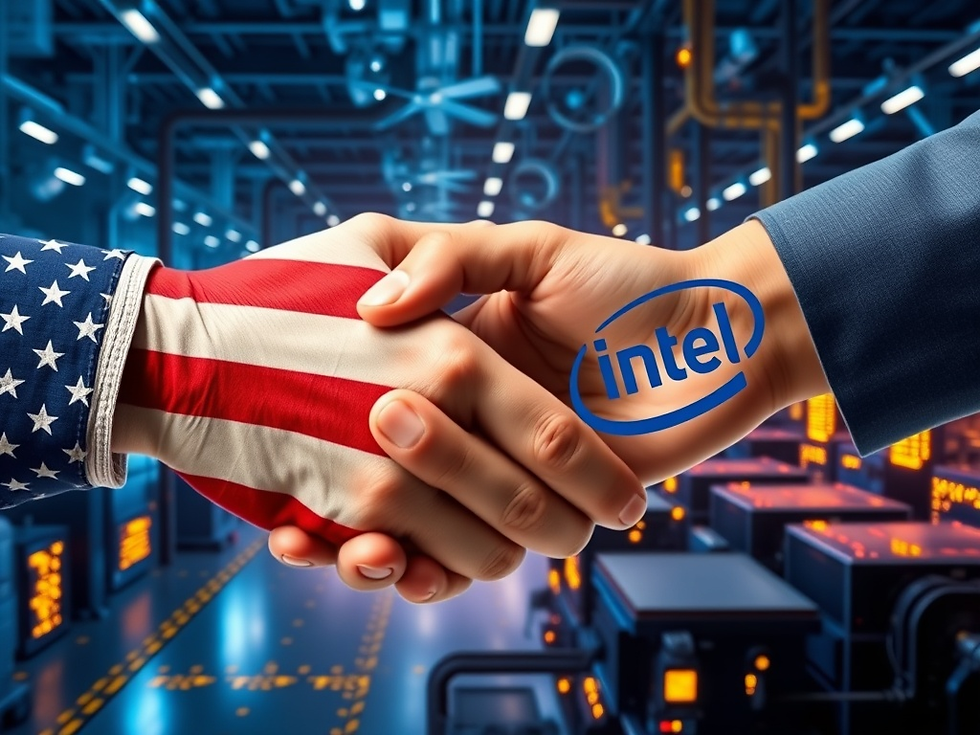Intel Gains $2 Billion Investment from SoftBank Amid U.S. Stake Talks
- Olivia Johnson

- Aug 19
- 11 min read

In a landmark move signaling renewed confidence in the semiconductor industry, SoftBank Group announced a $2 billion equity investment in Intel Corporation. This infusion of capital comes at a critical juncture for Intel, as ongoing Intel stake talks with various parties underscore the company's strategic need for fresh funding to bolster its manufacturing and R&D initiatives. The agreement, publicly unveiled on August 19, 2025, represents not only a financial lifeline but also a strategic endorsement of Intel’s pivotal role in the semiconductor sector.
The SoftBank $2 billion investment in Intel sends several immediate signals. First, it provides Intel with a much-needed capital boost that could accelerate its ambitious plans to expand fabrication facilities (fabs) and advance next-generation chip technologies. Second, it validates the semiconductor industry’s growing importance amid global supply chain challenges and geopolitical tensions. Finally, investor reaction to the announcement showed optimism, with Intel’s stock gaining momentum, reflecting market confidence in this strategic partnership.
This article delves into critical aspects surrounding the deal: the precise mechanics and terms of the investment, the strategic rationale behind SoftBank’s involvement, regulatory considerations especially given U.S. foreign investment rules, operational and technical impacts on Intel’s roadmap, market and investor responses, and broader industry implications. Each section integrates insights to offer stakeholders clear understanding and actionable perspectives on what this transaction means for Intel’s future.
Deal Details and Terms of the SoftBank Investment in Intel

The SoftBank investment agreement stipulates a $2 billion equity purchase aimed at strengthening Intel’s capitalization and supporting its manufacturing growth. Although exact share percentages have not been fully disclosed pending regulatory approvals, initial reports indicate that SoftBank will acquire newly issued shares representing a significant but non-controlling stake in Intel.
The deal structure includes customary closing conditions such as regulatory clearances and shareholder approvals, with an expected closing timeline within six months post-announcement. Governance arrangements reportedly grant SoftBank certain voting rights aligned with its equity position but stop short of board control—ensuring Intel maintains operational independence while benefiting from strategic partnership input.
The investment announcement on August 19 followed weeks of confidential Intel stake talks, signaling a culmination of careful negotiation. Both companies have emphasized transparency and collaboration during the closing process to meet anticipated regulatory scrutiny, particularly from U.S. authorities overseeing foreign investments in critical technology sectors.
Investment Structure and Financial Terms
The $2 billion injection takes the form of common equity issued by Intel, reflecting confidence in the company’s growth prospects without imposing convertible debt or preferred equity constraints. This structure suggests a straightforward capital infusion designed to maintain balance sheet strength while minimizing dilution complexity.
Valuation implied by the transaction aligns with Intel’s recent market capitalization trends, providing modest uplift without causing excessive share dilution. According to Reuters coverage, proceeds from this equity sale will directly support Intel’s capital-intensive manufacturing and R&D agenda.
Market analysts at Bloomberg highlight that this structure balances SoftBank’s desire for strategic exposure with Intel’s need for flexible capital deployment.
Conditions, Closing Steps and Governance Considerations
The deal remains subject to customary regulatory reviews by U.S. agencies such as the Committee on Foreign Investment in the United States (CFIUS) or analogous bodies evaluating national security implications of foreign investments in critical sectors. Potential mitigation measures—such as governance safeguards or restrictions on sensitive technology access—could be imposed to satisfy compliance requirements.
Shareholder approval is also anticipated, given the issuance of new shares alters capital structure materially. Both firms have pledged cooperation to expedite filings and provide transparent disclosures, acknowledging heightened political sensitivity around foreign stakes in American semiconductor firms.
As Bloomberg notes, the ongoing Intel stake talks reflect a broader context where foreign investments in U.S. chipmakers face intense scrutiny but also represent vital capital inflows supporting technological sovereignty.
How Intel Plans to Use the $2 Billion Proceeds
Intel intends to channel these funds primarily toward capital expenditures focused on expanding fabrication capacity, upgrading equipment to improve yields, and accelerating development of advanced process nodes critical for competitive parity. Additionally, portions may support research & development efforts targeting AI accelerators and custom chip designs central to Intel’s product roadmap.
Reuters reports that this capital lifeline enhances Intel’s financial flexibility, enabling it to reduce debt pressures while advancing its manufacturing ambitions essential for regaining market momentum against rivals like TSMC and AMD. The investment thus underpins both immediate operational needs and longer-term strategic objectives.
Strategic Rationale: Why SoftBank Invested and What Intel Gains

SoftBank’s decision to invest $2 billion in Intel is rooted in a multifaceted strategic rationale combining portfolio diversification, access to semiconductor innovation, and alignment with its long-term technology investment thesis. For SoftBank, securing a meaningful stake in a leading U.S.-based semiconductor manufacturer offers direct exposure to cutting-edge chipmaking technologies that underpin numerous tech sectors including AI, cloud computing, and automotive electronics.
From Intel’s perspective, this capital infusion is crucial for scaling manufacturing infrastructure, expediting R&D initiatives for next-generation nodes, and strengthening competitive positioning against dominant players like Taiwan Semiconductor Manufacturing Company (TSMC), AMD, and Nvidia. The investment also provides optionality for potential M&A moves or ecosystem partnerships essential for maintaining market relevance.
Analysts view this not merely as a financial transaction but as a strategic catalyst signaling renewed confidence in Intel’s turnaround prospects. The deal conveys to markets that both parties see substantial upside in leveraging each other’s capabilities amid an increasingly complex semiconductor landscape.
SoftBank’s Strategic Goals with a $2B Intel Stake
SoftBank has an established history of making large-scale strategic bets on transformative technology companies across sectors such as telecommunications, AI, and cloud infrastructure. This $2 billion SoftBank investment terms align with its vision of fostering semiconductor leadership through active portfolio management.
Access to Intel’s semiconductor innovation pipeline presents opportunities for collaboration on emerging technologies like AI chips and custom silicon designs tailored for data centers or IoT devices. According to AInvest, SoftBank views this investment as a strategic catalyst that enhances both its tech ecosystem exposure and influence over a critical supply chain domain.
Intel’s Strategic Needs and Expected Benefits from the Investment
Intel requires substantial capital to fund expensive fabs construction, mature advanced process nodes (such as 3nm and below), and develop AI accelerator chips that are increasingly pivotal for market differentiation. This injection supports these priorities by reducing funding gaps that had hampered prior expansion efforts.
Moreover, as highlighted by AInvest, this partnership represents a strategic inflection point enabling Intel to regain investor confidence through visible progress on manufacturing scale-up and product innovation timelines critical for revenue growth.
Expert and Media Perspectives on Deal Intent
Media outlets like CNBC interpret the SoftBank investment as both a financial lifeline and a broader market signal emphasizing semiconductor sector resilience amid geopolitical uncertainties. Experts point out that key performance indicators (KPIs) investors will scrutinize post-close include share price trends, margin recovery trajectories, production yield improvements, and fab capacity ramp milestones.
Forbes further elaborates on how this partnership might redefine competitive dynamics by injecting fresh capital into an incumbent chipmaker striving to reclaim leadership while navigating emerging challenges such as supply chain constraints and evolving AI workloads.
Operational and Technical Implications for Intel’s Manufacturing and Product Roadmap

The $2 billion infusion is poised to accelerate multiple facets of Intel’s manufacturing capabilities and product development strategies. Increased capital enables timely expansion of fabrication capacity, procurement of state-of-the-art equipment, yield optimization programs, and intensified R&D efforts on next-generation nodes critical for performance gains.
Intel’s ambitions encompass enhancing node maturity (e.g., sub-3nm processes), boosting output of AI-specific accelerators increasingly vital across cloud services and autonomous systems, and strengthening foundry service offerings aiming to capture third-party chip production demand.
Additionally, this partnership may amplify ecosystem engagement with equipment suppliers, packaging partners, and IP collaborators—factors crucial for operational efficiency and technology transfer. The interplay between capital deployment and strategic collaboration will determine the ultimate impact on Intel’s competitive positioning.
Manufacturing Capacity, Fabs and Capital Expenditure Effects
A significant portion of the SoftBank investment will likely fund expansion of existing fabs or construction of new facilities utilizing advanced process technologies. This includes purchases of cutting-edge lithography tools (EUV machines), deposition systems, and testing equipment vital for improving manufacturing yields—a critical metric affecting cost competitiveness.
Technical analysis by AnandTech suggests that enhanced capex budgets could shorten timelines toward parity with rivals’ node maturity levels (e.g., matching TSMC's 3nm node) thereby fortifying Intel's position in high-performance computing segments.
Insight: Improved manufacturing efficiency directly translates into better margins and faster time-to-market for competitive chip products.
R&D, Next-Generation Semiconductor Technologies, and Product Development
Beyond physical fabs, funding will boost R&D pipelines focusing on advanced packaging techniques (such as chiplet integration), novel transistor architectures (e.g., gate-all-around FETs), and AI accelerator designs optimized for machine learning workloads.
Academic assessments from Semantic Scholar underscore how such investments can catalyze technological diffusion beyond incremental improvements—potentially setting new industry standards over medium-term horizons.
Ecosystem, Foundry Strategy and Partner Integrations
This investment strengthens Intel’s ability to promote its foundry services by signaling financial stability to potential customers seeking alternatives to dominant external foundries like TSMC or Samsung Foundry. Enhanced capital supports ecosystem partnerships with suppliers of materials, equipment vendors, IP licensors, and design houses essential for comprehensive service offerings.
AnandTech commentary emphasizes that effective partner integrations facilitated by this deal could boost supply chain resilience while fostering innovation through technology transfer agreements (AnandTech discussion).
Regulatory Context: U.S. Foreign Investment Rules and Stake Discussions

Foreign investments in U.S. companies operating in critical technology sectors such as semiconductors undergo rigorous regulatory scrutiny due to national security considerations. The SoftBank–Intel deal is no exception; it must navigate complex frameworks designed to protect sensitive technology assets while balancing economic openness.
Key legislation shaping this environment includes bills like H.R.7178 aimed at enhancing review processes for foreign acquisitions involving dual-use technologies (technologies with both civilian and military applications). The transaction also implicates provisions under Public Law 116-283 establishing governance structures around foreign investment oversight.
Overview of U.S. Laws Affecting Foreign Investments in Critical Tech
U.S. laws empower bodies such as CFIUS to review transactions potentially impacting national security through foreign ownership or control of sensitive entities. Semiconductors are explicitly classified as strategically vital given their role in defense systems, infrastructure, and economic competitiveness.
Congressional resources detail how these statutes require notification thresholds based on investment size or control rights—triggering mandatory reviews that assess risks related to technology transfer, data security, or supply chain integrity (H.R.7178 text, Public Law 116-283).
How Regulatory Review Could Affect the SoftBank–Intel Investment Timeline
The review process involves comprehensive evaluation by multiple agencies focused on mitigating risks while facilitating beneficial investments. Potential outcomes include unconditional approvals, conditional clearances requiring mitigation measures (e.g., restrictions on board representation or information access), or even divestment mandates in extreme cases.
Financial Times highlights that precedent suggests scrutiny will focus on ensuring no transfer of cutting-edge manufacturing know-how occurs outside authorized channels. This review may extend deal timelines but is manageable with proactive compliance strategies.
Practical Compliance and Public Interest Considerations
To ease regulatory concerns, companies often adopt transparency measures such as:
Public disclosures detailing deal scope
Commitments limiting foreign investor influence over sensitive operations
Establishment of governance protocols ensuring compliance
CNBC notes that clear communication around national interest commitments can foster smoother approvals while maintaining investor confidence.
Market Reaction, Financial Implications and Investor Sentiment

The announcement of SoftBank's $2 billion commitment elicited an immediate positive response in financial markets. Intel's shares experienced an uptick reflecting renewed investor optimism about the company’s prospects bolstered by fresh capital support from a respected global investor.
Analysts have weighed in on valuation shifts implied by new equity issuance while debating dilution risks versus long-term value creation inherent in enhanced operational funding. Broader implications include potential shifts in semiconductor financing patterns encouraging more strategic investments into well-capitalized incumbents pursuing aggressive growth strategies.
Share Price and Near-Term Market Reaction
Following the announcement date (August 19), MarketWatch reported that Intel's stock price rose approximately 5% during intraday trading accompanied by increased volume—a strong indicator of positive market sentiment toward the deal.
This movement signals investor belief that the infusion could translate into tangible operational improvements aiding margin recovery and competitive positioning—key factors driving shareholder value over coming quarters.
Analyst Views, Valuation Impact and Capital Markets Perspective
Bloomberg coverage synthesizes analyst commentary noting that while some dilution is inevitable given share issuance size, strategic value added through accelerated fab expansion justifies premium pricing adjustments.
Sell-side firms have revised price targets upward reflecting improved growth outlooks but emphasize cautious monitoring of execution risks tied to regulatory approvals and operational milestones.
Broader Investor Implications for Semiconductor Financing Trends
Reuters frames this transaction as a potential catalyst encouraging additional large-scale strategic investments across semiconductor companies facing intensifying capex demands.
It underscores growing investor appetite for backing firms innovating at scale amid global chip shortages reinforcing supply chain resilience priorities—an important trend shaping future capital allocation decisions within the sector.
Industry Implications and Future Trends for the Semiconductor Landscape

SoftBank’s $2 billion investment epitomizes broader industry trends where cross-border capital flows intersect with geopolitical considerations shaping semiconductor strategies worldwide. This deal contributes to renewed emphasis on onshoring capabilities within major economies seeking technological self-sufficiency while balancing commercial imperatives.
Competitive impacts ripple through leading players including TSMC, Samsung Electronics, AMD, Nvidia, and smaller foundries who must recalibrate market approaches in light of Intel's strengthened funding position. Such dynamics may spur consolidation moves or new partnerships accelerating technology races focused on AI chips, advanced packaging, or energy-efficient architectures.
Cross-Border Investment Trend and Strategic Partnerships
The transaction fits within an emerging pattern where global capital targets semiconductor firms offering both commercial growth potential and strategic leverage amidst geopolitical uncertainty. Financial Times analysis highlights tension between encouraging innovation-driven investments while guarding critical technology assets from undue foreign influence.
This balance shapes how deals are structured with layered compliance mechanisms facilitating mutually beneficial partnerships without compromising national interests.
Competitive Landscape and Potential Market Shifts
With added funding from SoftBank enhancing its manufacturing scale-up ability, Intel is positioned to challenge rivals more aggressively across CPUs for PCs/cloud servers as well as AI accelerator markets gaining prominence due to generative AI workloads. Forbes notes that competitors may respond through accelerated innovation cycles or strategic alliances aimed at defending market share.
Customer choices increasingly hinge on capacity reliability combined with performance leadership—areas where capital-backed advancements matter most.
Long-Term R&D and Technology Leadership Scenarios
AInvest projects that successful deployment of this capital coupled with collaborative R&D efforts could position Intel among top-tier technology leaders over the next 3–7 years—contingent upon effective execution of fab expansions and breakthrough process innovations.
Alternatively, delays or regulatory hurdles might extend timelines allowing competitors to consolidate advantages—underscoring importance of coordinated strategy moving forward.
Challenges, Solutions and an Implementation Roadmap for the SoftBank–Intel Partnership

Despite promising prospects, several challenges must be addressed for successful partnership realization:
Challenges:
Navigating complex regulatory clearance processes without undue delays
Aligning SoftBank's strategic objectives with Intel’s operational priorities
Integrating governance frameworks balancing investor influence with corporate autonomy
Managing expectations among diverse stakeholder groups including shareholders
Solutions:
Proactive regulatory engagement ensuring transparency
Establishment of joint steering committees facilitating clear communication
Defining measurable KPIs linked to capital deployment phases
Regular investor updates fostering trust
Implementation Roadmap (6–12 months):
Timeline | Key Activities |
|---|---|
Months 1–3 | Regulatory filings; initial governance setup |
Months 3–6 | Closing processes; early-stage capex deployment |
Months 6–9 | Joint operational reviews; progress reporting |
Months 9–12 | Scale fab expansions; assess KPIs; adjust plans |
Financial Times stresses that managing integration risks early coupled with clear communication strategies mitigates friction, while Forbes recommends transparency as key to sustaining investor confidence.
FAQ — Common Questions About SoftBank’s $2B Investment in Intel
Q1: What exactly did SoftBank invest in? SoftBank committed $2 billion to purchase equity shares issued by Intel Corporation as part of a strategic partnership announced publicly by both companies. Details are available in the Intel press release and SoftBank announcement.
Q2: Will this change Intel’s ownership structure significantly? While material, this is not expected to confer controlling interest to SoftBank but does increase its stake noticeably. Precise share percentages will be detailed in forthcoming SEC filings per Reuters report.
Q3: Could U.S. regulators block or condition the deal? Yes. Given semiconductors’ strategic importance, agencies like CFIUS may require mitigation measures or impose conditions before approval per legislation outlined in Congressional bill text and Public Law 116–283.
Q4: How did markets react after the announcement? Intel shares rose immediately following news release indicating positive investor sentiment; analysts remain cautiously optimistic pending execution details (MarketWatch coverage).
Q5: What does this mean for semiconductor competition? The investment strengthens Intel's ability to compete via enhanced capex budgets facilitating manufacturing scale-up and R&D acceleration—potentially reshaping dynamics vis-à-vis TSMC, Samsung, AMD (Forbes analysis).
Q6: Will this accelerate Intel's chip manufacturing roadmap? Potentially yes; however actual acceleration depends on effective allocation of proceeds alongside overcoming regulatory hurdles (AnandTech technical analysis).
Conclusion and Actionable Insights for Stakeholders
SoftBank’s $2 billion investment represents a meaningful strategic vote of confidence in Intel’s future amid challenging industry dynamics. If deployed effectively—with timely regulatory clearance—the funds can materially accelerate fab expansions, R&D breakthroughs, and market repositioning efforts vital for sustaining competitiveness in an evolving semiconductor landscape.
Intel should prioritize transparent engagement with regulators, publish detailed capital allocation plans, and set clear milestones measurable by investors to maintain momentum. Meanwhile, SoftBank must clarify its strategic intent alongside governance roles ensuring alignment throughout partnership execution phases.
Looking ahead, stakeholders should closely monitor regulatory outcomes alongside Intel execution on fab buildouts and product roadmap milestones. Additionally, observe whether similar strategic investments emerge sector-wide, potentially signaling a new era of cross-border collaboration fueling semiconductor innovation.
Next steps for Intel and SoftBank include navigating regulatory approvals swiftly while translating capital into tangible manufacturing advancements—key determinants shaping the future trajectory of both companies in this critical sector.


